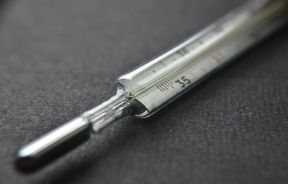Living Near This Popular Sports Facility May Triple Your Risk Of Parkinson's Disease

Living next to a golf course may seem like a dream, with lush greens, peaceful surroundings, and an ambience of a luxury lifestyle. However, new research suggests that this idyllic setting could come with a hidden cost. Scientists have found that people living near golf courses may face an increased risk of developing Parkinson's disease.
Parkinson's disease (PD) is a neurodegenerative disorder that affects movement and coordination. Common symptoms include tremors, stiffness, slowed movement, and balance problems. While the exact cause is unknown, both genetic and environmental factors are believed to play a role.
The latest study published in the journal JAMA Network Open reveals that people living within two miles of a golf course face nearly three times the risk of developing Parkinson's disease. The risk is highest for residents in water service areas where golf courses are located in regions prone to groundwater contamination.
This heightened risk is linked to the heavy use of pesticides on golf courses, which are applied in the U.S. at rates up to 15 times higher than in many European countries. These chemicals can seep into the soil and contaminate groundwater, raising serious concerns about the safety of local drinking water.
For the study, researchers analyzed medical records from the Rochester Epidemiology Project, covering 27 counties in Minnesota and Wisconsin between 1991 and 2015. They examined the relationship between living near golf courses and the risk of Parkinson's disease, focusing on areas surrounding 139 golf courses.
"We observed that the risk of developing PD was greatest for those living within 1 to 3 miles of a golf course and that the risk of PD generally decreased with increasing distance from a golf course. We also found that individuals getting their drinking water from water service areas with a golf course had nearly double the odds of PD compared with individuals getting drinking water from water service areas without a golf course," the researchers wrote.
The researchers found that while the risk of Parkinson's disease remained steady for those living within three miles of a golf course, it decreased by 13% for every mile beyond that. Pesticides including organophosphates, chlorpyrifos, methylchlorophenoxypropionic acid (MCPP), 2,4-dichlorophenoxyacetic acid (2,4-D), maneb, and organochlorines, which are known to be linked to Parkinson's disease, are commonly used to treat golf courses.



























